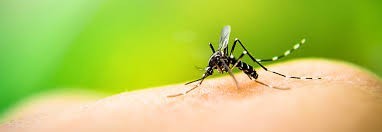Collective effort can defeat dengue

By Ajita Rijal
Kathmandu, Sept. 13: With a spike in dengue incidents across the country, stakeholders have asked members of every sector to join hands in defeating the growing scourge of the dreaded disease.
Speaking at a programme organised by the Epidemiology and Disease Control Division under the Ministry of Health and Population in the capital on Thursday, the stakeholders said that dengue should be everyone’s concern. “We can control dengue only when all sectors work together,” they said.
Dr B.N. Nagpal, Senior Entomologist of World Health Organisation, said that it was important to control the vectors of dengue and everyone should act for eliminating the vectors.
It is not only the responsibility of the health ministry and its departments but an inter-sectoral community approach is required to control dengue, said Dr Nagpal.
“We are not able to control the vector disease, so the number of dengue infection is increasing,” said Nagpal. Dr Nagpal prioritised ‘search and destroy’ drive, including destroying possible breeding containers of the mosquito larvae, fogging house to house, reducing man-mosquito-contact by physical barriers and community participation.
In order to control the epidemic of dengue a high level task force and inter-ministerial collaboration for the identification of risk areas, mapping, and search and destroy, awareness, mass mobilisation, capacity building are needed, said Dr. Nagpal.
The Aedes aegypti mosquitoes are generally found in the areas where the air is relatively static and the humidity high.The dengue carrying Aedes can breed in possible water containers, including flower pots, flower vessels, buckets, water tanks, tyres, discarded toys, brick holes, tree holes and construction blocks, among others.
“The Aedes rest inside the house, clean your own house, spray with aerosol in the morning and evening,” said Dr. Nagpal. “These mosquitoes are the day-biters with peak biting hours after sunrise and two hours before the sunset.”
During the day time, most Aedes prefer to rest in the dark corners of rooms mostly under the furniture, curtains, hanging clothes as they like to avoid light, said Dr Nagpal. These mosquitoes are restricted to maximum of three to four hundred metres and thus maintain high degree of contact with human, he informed.
Generally, female Aedes distributes an egg batch among the several containers, and lays 60- 100 eggs which can withstand long periods of dryness, up to one year and can transported long distances in dry condition, said Dr Nagpal.
According to Dr Nagpal, a dengue causing Aedes can bite human at every alternate day and each laying eggs is followed by another blood meal and they need blood meal to develop the eggs.
Dr Bibek Lal, director at Epidemiology and Disease Control Division, suggested the dengue infected people should take the medicines only on the basis of the prescriptions of doctors.
Dr Lal said that there was no any specific medicine for the dengue disease. “One should take rest and intake liquid foods. The doctors should examine the condition of patients and treat under their observations,” said Dr Lal. Over 40 per cent of the world’s population are now at risk from dengue, which has become a multi-country problem. According to WHO, approximately 126 countries are affected with the dengue infection.
The main factors for spreading dengue is the climate change, global warming, storage of water in containers due to lack of water supply, unplanned urbanisation, poor sanitation, high population density, unregulated construction, migration (global and domestic travel) and cryptic breeding sites.
Every year, dengue cases are increasing in South East Asian countries, informed Dr Lal. “However, it is not as deadly as many people perceive. It is like a viral disease and the infected persons overcome it within a week if they take rest,” said Dr. Ankur Ghimire.
Recent News

Do not make expressions casting dout on election: EC
14 Apr, 2022
CM Bhatta says may New Year 2079 BS inspire positive thinking
14 Apr, 2022
Three new cases, 44 recoveries in 24 hours
14 Apr, 2022
689 climbers of 84 teams so far acquire permits for climbing various peaks this spring season
14 Apr, 2022
How the rising cost of living crisis is impacting Nepal
14 Apr, 2022
US military confirms an interstellar meteor collided with Earth
14 Apr, 2022
Valneva Covid vaccine approved for use in UK
14 Apr, 2022
Chair Prachanda highlights need of unity among Maoist, Communist forces
14 Apr, 2022
Ranbir Kapoor and Alia Bhatt: Bollywood toasts star couple on wedding
14 Apr, 2022
President Bhandari confers decorations (Photo Feature)
14 Apr, 2022











